– By Anchita Dua

With the release of Agnihotri’s movie, ‘The Kashmir Files’, the hardships endured by Kashmiri Pandits is ripe in the minds of citizens. Seething with the feeling of retribution, people all over India have started a new conversation seeking justice for the atrocities committed and shunned by the media for decades. But can this reinstatement happen considering the new geo-political developments in Kashmir? This article explores the changes in Afghanistan, its equation with Pakistan and what it could possibly mean for Kashmir.
The Afghan Angle
The withdrawal of US troops from Afghanistan led to an administrative and security vacuum which the Taliban used to its advantage, sweeping over the entire stretch of land in a matter of days. The Taliban, infamous for its human rights and cultural abuses, curtailment of women’s rights and the devastation of free media and press currently composes the government of Afghanistan. They have been known to work with Al Qaeda, notorious for the 9/11 terror attacks in USA. Although as agreed in the Doha deal, the Taliban has reassured against utilisation of its soil for endangering global security but experts state otherwise.
The three major players in this arena are – Al Qaeda, the Taliban and Islamic State (ISIS or ISIL). While the Taliban and Al Qaeda have strong ties and fought against the Soviet offensive alongside each other, The Islamic State, initially an offshoot of the Taliban, functions independently and has a more barbaric undertone than the Taliban. The Islamic State in Khorasan Province (ISKP- the Afghanistan body of ISIS) diverges from the Taliban over ideology, strategy and objective. While the ISKP is a subscriber of sectarian violence against the Shi’a community, it has accused the Taliban of abandoning global caliphate aspirations to strike a deal with the US (Doha Deal). ISKP, earlier subdued by the presence of the American forces, has sought to re-building itself and intends to seize control of Afghanistan from Taliban to establish a “pure” Islamic state. During the first four months of 2021, the United Nations Assistance Mission in Afghanistan (UNAMA) recorded 77 attacks by the ISKP.
Although the USA has majorly clamped down on Al-Qaeda with the Afghanistan war and has assassinated the majority of its leaders, the Pentagon Press Secretary has confirmed the presence of Al-Qaeda in Afghanistan and the UN June report has located the activities of Al-Qaeda in at least 15 provinces of Afghanistan. Presently laying low due to the Doha agreement, Al-Qaeda is counting on the Taliban for a piggy-back ride, preparing to strike when the time is right. According the same report, The Haqqani network (HN) more skilled and specialised in explosives and rocket construction has a force of about 3,000 to 10,000 traditional armed fighters. The HN recognized as a forreign terrorist organization, is a global unifier of major terrorist organizations operating in the middle-east with those in Pakistan and Afghanistan. Led by Jalaluddin Haqqani rumoured to have mentored Bin laden prior to 9/11 attacks on the West, the organisation has gained supporters from Arabian Peninsula, Kashmir, Punjab, North America and Indonesia as well as Pakistani madrassa students and ISI agents. The network has over 10,000 members and primarily recruits jihadis from Northern Pakistan and Southeastern Afghanistan.
The Pak Factor
Pakistan has been a safe haven for religious extremist groups since its very inception. As the chants for ‘Azad Kashmir’ became louder in Pakistan and it was unable to access it legally, it started exporting its own brand of terrorism to the region. It has a network of terrorist organizations with the specific purpose of acceding Kashmir to Pakistan like Lashkar-E-Taiba (LeT), Jaish-e-Mohammad (JeM), Tehrik-i-Taliban Pakistan (TTP) who have exported militancy – trained jihadists and explosives to the region of Kashmir.
TTP is the Pakistan brand of Taliban which aspires to strictly enforce the Sharia law in the land of Pakistan under an Islamic Caliphate. It has conflicted with Pakistan’s interests since its very origin which was an attempt to oppose the state’s support of America’s global war on terrors. It has conducted more than 32 attacks inside Pakistan in August 2021 alone. However, post Taliban takeover, TTP has strengthened in numbers and in spirit. Although, as of late TTP is in mood for negotiation so as to not add onto the political burden on Taliban who has promised America not to let its grounds be used for terrorism.
Other organisations like JeM and LeT have been created with the sole purpose of uniting Kashmir with Pakistan. LeT as well as JeM have been fairly active in Kashmir in the present day. Through their links with the Taliban they have access to an entire country to train militants, prepare explosives and execute terror plans. With Pakistan’s Prime Minister facing a no-confidence motion, there is a further threat of the country falling into extremist elements. Pakistan, controlled by political instability and a crippling economy survives on loans from foreign countries which have put it under a massive debt of $85.6 Billion.
Even though the Taliban has claimed that it will not intervene into the internal political matters of India, there are extremist elements in both the countries which are not under the control of the state. Terror Outfits like JeM and LeT have not subsided their Kashmir demand and JeM has been recently known to be in contacts with Taliban over the same.
The Drug Ingredient
This chain of terror outfits is financed by Narcotics i.e. illegal cultivation, production, distribution and sale of – heroine, methamphetamine, opium and hashish (cannabis raisins) among others. As per the UNODC report opiate from Afghanistan is not only supplied and sold in nearby areas of India and Pakistan but also North America, South America, certain regions of Africa and even Europe. As per the report, 70-80% of the world’s supply of heroin comes from Afghanistan. Even during the pandemic, poppy cultivation soared 37% through the dark web while transportation was done via drones. In a statement by the head of the Kabul Office of the U.N. Office of Drugs and Crime (UNODC), Cesar Grudes has said “The Taliban have counted on the Afghan opium trade as one of their main sources of income, according to Reuters. As part of the Golden Crescent operating in Iran, Afghanistan and Pakistan pose a direct threat to Indian interests. The entire network of terrorist organizations operating in both the countries is financed by narcotic funds.
Kashmir Currently
Earlier, organisations like Jammu and Kashmir Liberation Front (JKLF), Tehreek-ul-Mujahideen (TuM), Lashkar-e-Omar (LeO) and Hizb-ul-Mujahideen (HM) extensively trained Kashmiri civilians as well as helped in import of trained jihadists from Pakistan to participate in terror attacks against minorities or civilians. Post abrogation of article 370, the incidents of violence as well as infiltration have come down as tourism has risen. However, there is the new rising threat of hybrid militancy which refers to militants disguised as citizens. Most targets in October 2021 were soft targets i.e. pistol borne youths who attacked minorities one day and then went back to their lives the next. Most of these recruits have been brainwashed and fed propaganda by organisations like JeM or LeT which has been made easier nowadays with the wide availability of the dark web. Social media is used to brand joining extremist organisations as rewarding and fulfilling. Videos of militants being killed or their last conversations or mobilization during their funerals is a common tactic used to entice youth into falling for the sentimental value attached with jihad.
Additionally the youth of Kashmir is grappling with is the rise of heroin abuse by 340% in the last two years which can very easily be linked to the Pak-Afghan nexus of drugs. The easy availability has caused over 600,000 youth to be addicted to be drug addicts.
What to Expect ?
It would be naive to assume that terror outfits like JeM or LeT would sit quietly just to assuage their Afghan counterpart. It is logical to suspect the diplomatic stand of Afghanistan and prepare for the extremist organisations working in sync with radical Pakistan elements. Terror groups don’t hesitate in taking advantage of political chaos. Considering the accelerating drug abuse in the valley, it wouldn’t be difficult for jihadists elements to incorporate addicted and destablised youth. Terror elements might even look towards expanding their drug trade with more parts of India to create instability and because it is their major source of income.
With the widespread practice of psychological warfare by some political as well as pressure groups present in Kashmir, civilians in Kashmir are kept in the dark about the various economic, political and demographic features of their ‘Jihadist’ movement. Brandishing the Indian state as ‘oppressive’ and glorifying Pakistan as the abode of liberty, propaganda has succeeded in brainwashing the youth. More institutions or organisations appealing to the populace and using manipulated information may surface.
Conclusion
Using the Afghanistan angle and the Pakistan factor, this article has attempted to understand the dynamics of Kashmir in the current geopolitical scenario. Because ISKP functions independently and opposes Taliban openly and the Haqqani network binds terror organizations from both the countries with that of J&K, it would be an understatement to say that India needs to worry. India needs to plan strategically to battle with information and psychological warfare that creates narratives inside the minds of the people, since hybrid militancy is the major issue facing Kashmir today. India also needs to invest in combating the drug crisis in Kashmir to secure its future.

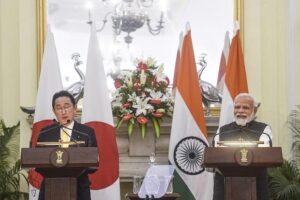

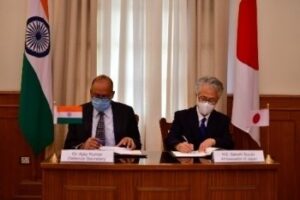
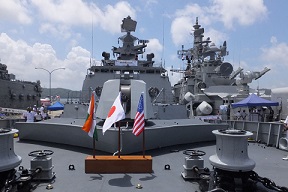
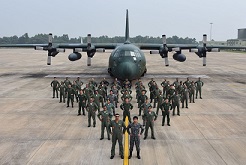

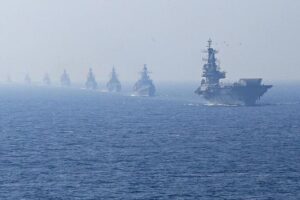

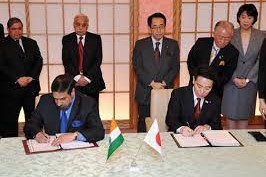

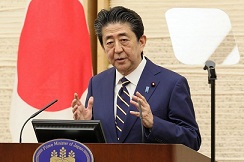
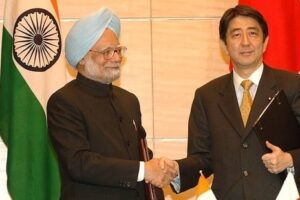
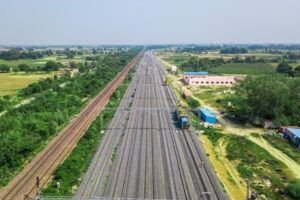
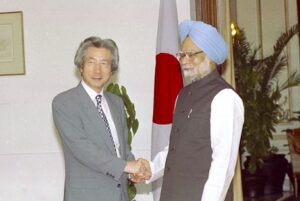
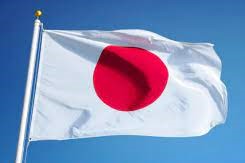
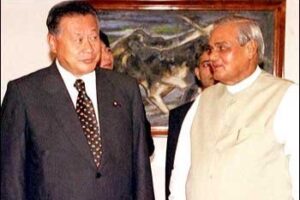
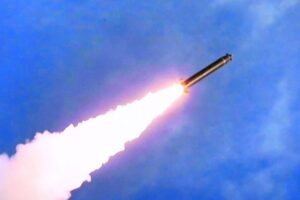
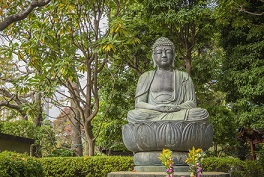



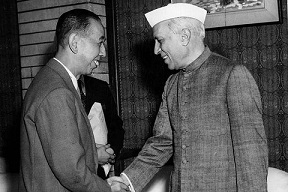
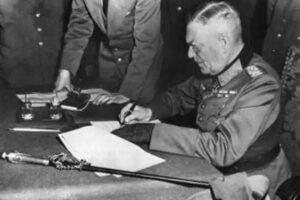


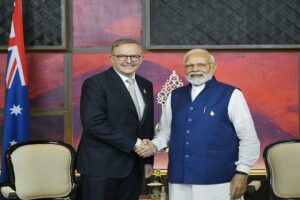



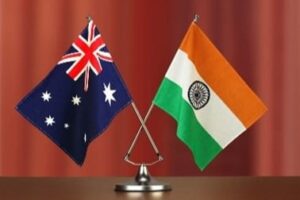
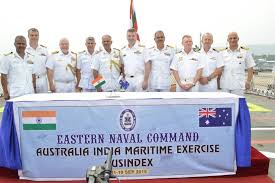

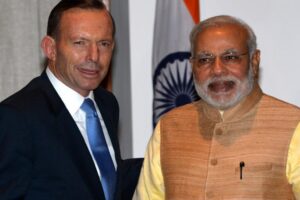
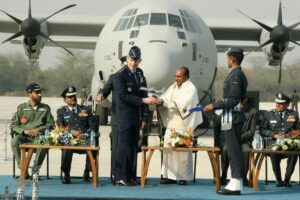




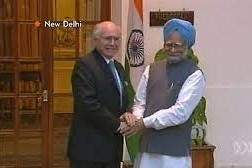
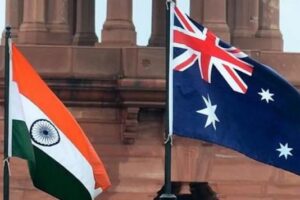
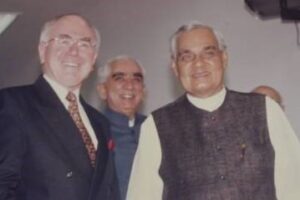
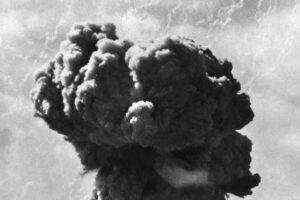
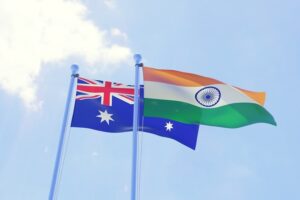

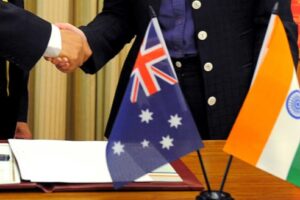


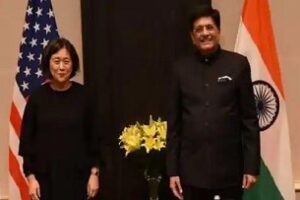
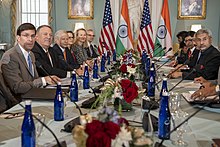

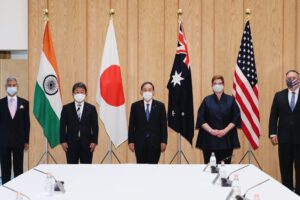

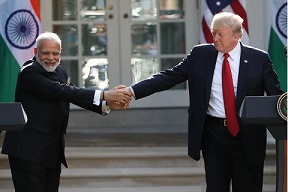
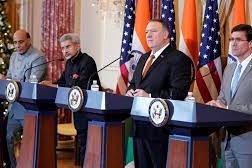

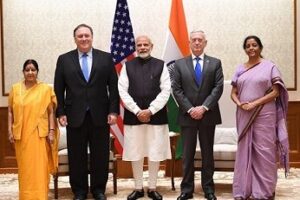
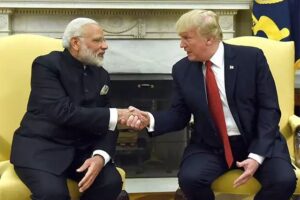
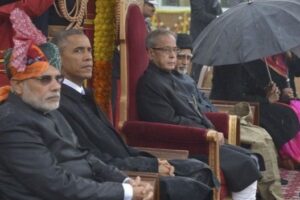

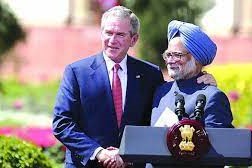
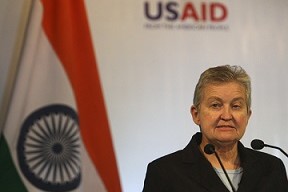
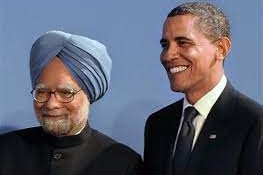
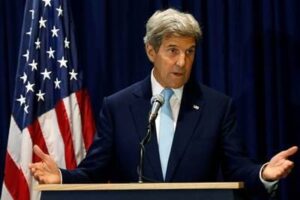

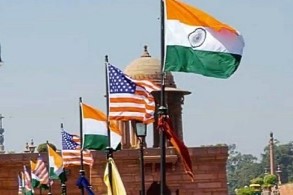
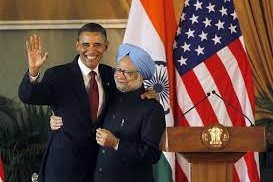
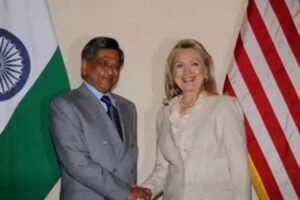
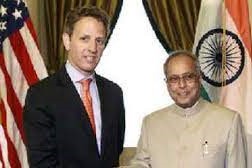
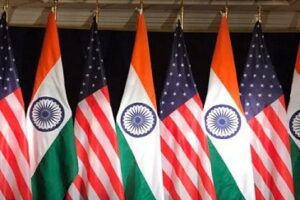
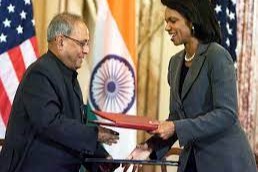

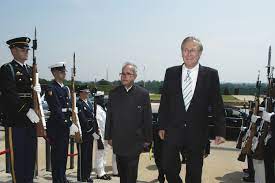

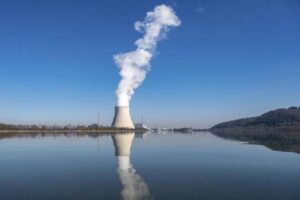
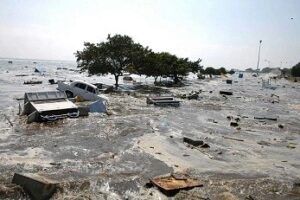
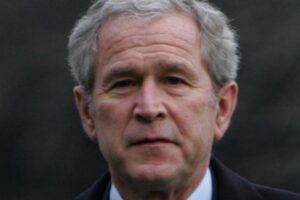
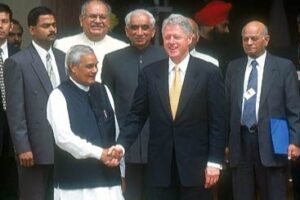
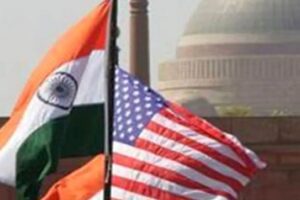
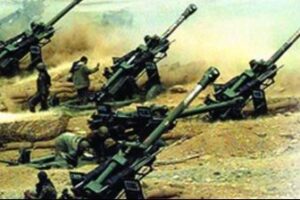
 onducted a total of five underground nuclear tests, breaking a 24-year self-imposed moratorium on nuclear testing. Pakistan followed, claiming 5 tests on May 28, 1998, and an additional test on May 30. The unannounced tests created a global storm of criticism, as well as a serious setback for decades of U.S. nuclear nonproliferation efforts in South Asia. On May 13, 1998, President Clinton imposed economic and military sanctions on India, mandated by Section 102 of the Arms Export Control Act (AECA), and applied the same sanctions to Pakistan on May 30. Some effects of the sanctions on India included: termination of $21 million in FY1998 economic development assistance; postponement of $1.7 billion in lending by the International Financial Institutions (IFI), as supported by the Group of Eight (G-8) leading industrial nations; prohibition on loans or credit from U.S. banks to the government of India; and termination of Foreign Military Sales under the Arms Export Control Act. Humanitarian assistance, food, or other agricultural commodities are excepted from sanctions under the law.
onducted a total of five underground nuclear tests, breaking a 24-year self-imposed moratorium on nuclear testing. Pakistan followed, claiming 5 tests on May 28, 1998, and an additional test on May 30. The unannounced tests created a global storm of criticism, as well as a serious setback for decades of U.S. nuclear nonproliferation efforts in South Asia. On May 13, 1998, President Clinton imposed economic and military sanctions on India, mandated by Section 102 of the Arms Export Control Act (AECA), and applied the same sanctions to Pakistan on May 30. Some effects of the sanctions on India included: termination of $21 million in FY1998 economic development assistance; postponement of $1.7 billion in lending by the International Financial Institutions (IFI), as supported by the Group of Eight (G-8) leading industrial nations; prohibition on loans or credit from U.S. banks to the government of India; and termination of Foreign Military Sales under the Arms Export Control Act. Humanitarian assistance, food, or other agricultural commodities are excepted from sanctions under the law. 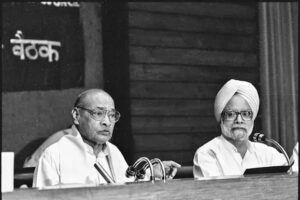
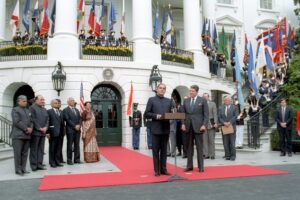
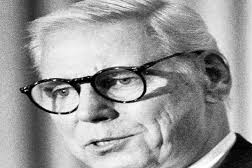
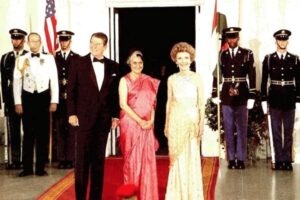
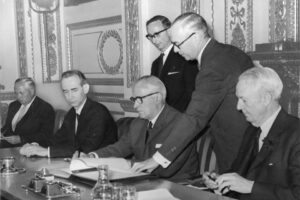
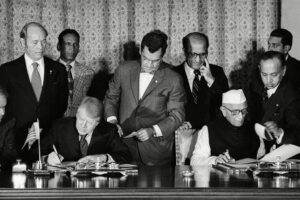
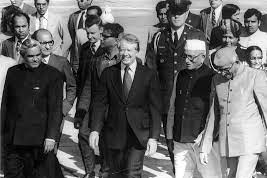
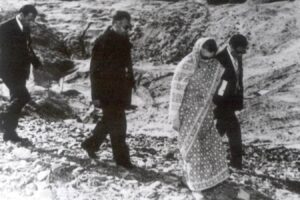
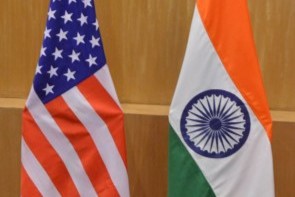

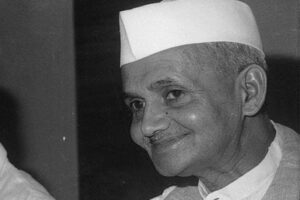

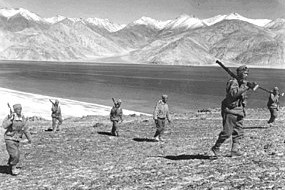
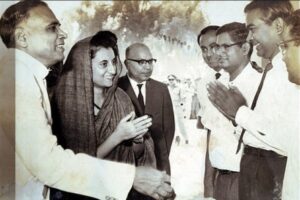
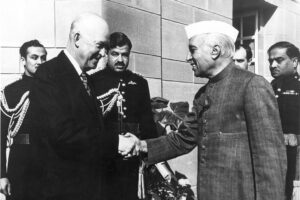

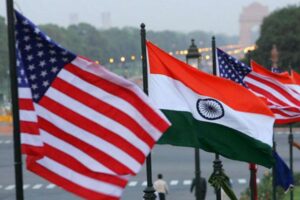
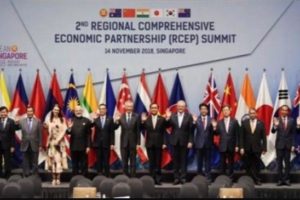 The first ministerial level meeting of QUAD was held on the sidelines of the United Nations General Assembly in New York. Before this, the QUAD had
The first ministerial level meeting of QUAD was held on the sidelines of the United Nations General Assembly in New York. Before this, the QUAD had AusIndEx is an exercise between India and Australia which was first held in 2015.The Australian
AusIndEx is an exercise between India and Australia which was first held in 2015.The Australian 
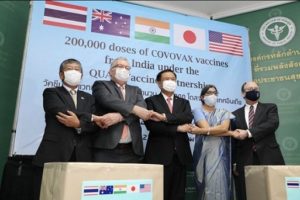


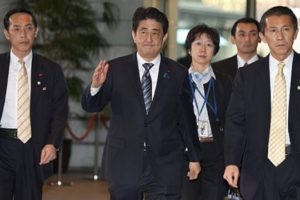
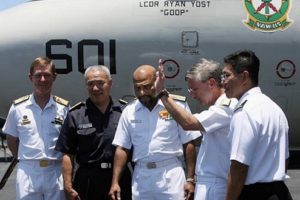
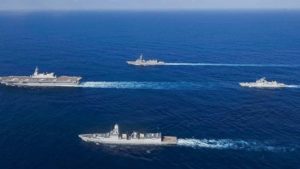

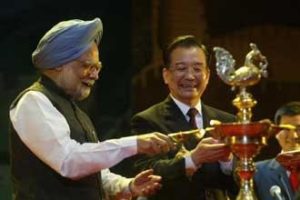 On recommendations of the Japanese government, the four countries met at Manila, Philippines for ASEAN Regional Forum (ARF) originally, but also ended up having a meeting of what we call the first meeting of four nation states on issues of
On recommendations of the Japanese government, the four countries met at Manila, Philippines for ASEAN Regional Forum (ARF) originally, but also ended up having a meeting of what we call the first meeting of four nation states on issues of 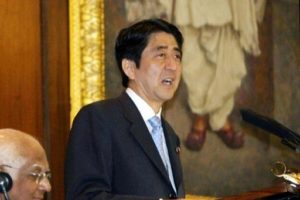 On his official visit to India, Japanese PM Mr. Shinzo Abe reinforced the ties of two nations, i.e., Japan and India with his famous speech about
On his official visit to India, Japanese PM Mr. Shinzo Abe reinforced the ties of two nations, i.e., Japan and India with his famous speech about  In 2007, Japanese President Shinzo Abe resigned from his post citing health reasons. This had a significant impact on QUAD as he was the architect & advocate of QUAD. His successor, Yasuo Fukuda, did not take up QUAD with such zeal leading to dormancy of the forum. (
In 2007, Japanese President Shinzo Abe resigned from his post citing health reasons. This had a significant impact on QUAD as he was the architect & advocate of QUAD. His successor, Yasuo Fukuda, did not take up QUAD with such zeal leading to dormancy of the forum. (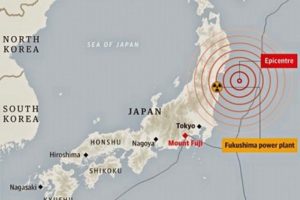 Japan earthquake and tsunami of 2011, also called Great Sendai Earthquake or Great Tōhoku Earthquake, was a 9.0 magnitude earthquake which struck below the floor of the Western Pacific at 2:49 PM. The powerful earthquake affected the northeastern coast of Honshu, Japan’s main island, and also initiated a series of large tsunami waves that devastated coastal areas of Japan, which also led to a major nuclear accident. Japan received aid from India, US, Australia as well as other countries. US Navy aircraft carrier was dispatched to the area and Australia sent search-and-rescue teams.
Japan earthquake and tsunami of 2011, also called Great Sendai Earthquake or Great Tōhoku Earthquake, was a 9.0 magnitude earthquake which struck below the floor of the Western Pacific at 2:49 PM. The powerful earthquake affected the northeastern coast of Honshu, Japan’s main island, and also initiated a series of large tsunami waves that devastated coastal areas of Japan, which also led to a major nuclear accident. Japan received aid from India, US, Australia as well as other countries. US Navy aircraft carrier was dispatched to the area and Australia sent search-and-rescue teams. 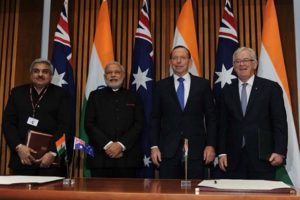 India and Australia signed the
India and Australia signed the  The India-Japan Agreement for Cooperation in the Peaceful Uses of Nuclear Energy was signed on 11 November, 2016 and came into force on 20 July, 2017 which was representative of strengthening ties between India and Japan. Diplomatic notes were exchanged between Dr. S. Jaishankar and H.E. Mr. Kenji Hiramatsu, Ambassador of Japan to India. (
The India-Japan Agreement for Cooperation in the Peaceful Uses of Nuclear Energy was signed on 11 November, 2016 and came into force on 20 July, 2017 which was representative of strengthening ties between India and Japan. Diplomatic notes were exchanged between Dr. S. Jaishankar and H.E. Mr. Kenji Hiramatsu, Ambassador of Japan to India. (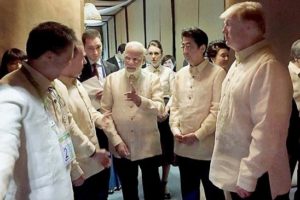 The foreign ministry
The foreign ministry The Officials of QUAD member countries met in Singapore on November 15, 2018 for consultation on regional & global issues of common interest. The main discussion revolved around connectivity, sustainable development, counter-terrorism, maritime and cyber security, with the view to promote peace, stability and prosperity in the
The Officials of QUAD member countries met in Singapore on November 15, 2018 for consultation on regional & global issues of common interest. The main discussion revolved around connectivity, sustainable development, counter-terrorism, maritime and cyber security, with the view to promote peace, stability and prosperity in the 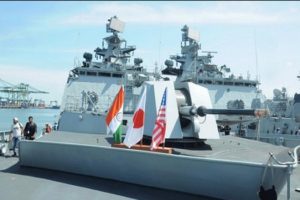 The 23rd edition of trilateral Malabar maritime exercise between India, US and Japan took place on 26 September- 04 October, 2019 off the coast of Japan.
The 23rd edition of trilateral Malabar maritime exercise between India, US and Japan took place on 26 September- 04 October, 2019 off the coast of Japan.  After the first ministerial level meeting of QUAD in September, 2019, the senior officials of US, Japan, India and Australia again met for consultations in Bangkok on the margins of the East Asia Summit. Statements were issued separately by the four countries. Indian Ministry of External Affairs said “In statements issued separately by the four countries, MEA said, “proceeding from the strategic guidance of their Ministers, who met in New York City on the sidelines of the UN General Assembly recently, the officials exchanged views on ongoing and additional practical cooperation in the areas of connectivity and infrastructure development, and security matters, including counterterrorism, cyber and maritime security, with a view to promoting peace, security, stability, prosperity in the Indo-Pacific region.”
After the first ministerial level meeting of QUAD in September, 2019, the senior officials of US, Japan, India and Australia again met for consultations in Bangkok on the margins of the East Asia Summit. Statements were issued separately by the four countries. Indian Ministry of External Affairs said “In statements issued separately by the four countries, MEA said, “proceeding from the strategic guidance of their Ministers, who met in New York City on the sidelines of the UN General Assembly recently, the officials exchanged views on ongoing and additional practical cooperation in the areas of connectivity and infrastructure development, and security matters, including counterterrorism, cyber and maritime security, with a view to promoting peace, security, stability, prosperity in the Indo-Pacific region.” US 2+2 Ministerial Dialogue was held on 18 December, 2019, in Washington DC. Secretary of State Michael R. Pompeo and Secretary of Defense Mark T. Esper will host Indian Minister of External Affairs Dr. S. Jaishankar and Minister of Defense Shri Rajnath Singh. The discussion focussed on deepening bilateral strategic and defense cooperation, exchanging perspectives on global developments, and our shared leadership in the Indo-Pacific region.The two democracies signed the Industrial Security Annex before the 2+2 Dialogue. Assessments of the situation in Afghanistan, Pakistan, Nepal, Sri Lanka, and the Indian Ocean region in general were shared between both countries. (
US 2+2 Ministerial Dialogue was held on 18 December, 2019, in Washington DC. Secretary of State Michael R. Pompeo and Secretary of Defense Mark T. Esper will host Indian Minister of External Affairs Dr. S. Jaishankar and Minister of Defense Shri Rajnath Singh. The discussion focussed on deepening bilateral strategic and defense cooperation, exchanging perspectives on global developments, and our shared leadership in the Indo-Pacific region.The two democracies signed the Industrial Security Annex before the 2+2 Dialogue. Assessments of the situation in Afghanistan, Pakistan, Nepal, Sri Lanka, and the Indian Ocean region in general were shared between both countries. (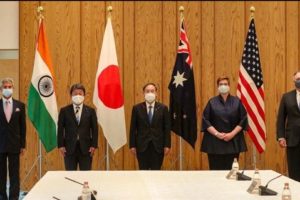 The foreign ministers of QUAD continued their discussions from the last ministerial level meeting in 2019, on 6 October, 2020. While there was no joint statement released, all countries issued individual readouts. As per the issue readout by India, the discussion called for a coordinated response to the challenges including financial problems emanating from the pandemic, best practices to combat Covid-19, increasing the resilience of supply chains, and enhancing access to affordable vaccines, medicines and medical equipment. There was also a focus on maintaining stability in the Indo-Pacific region amidst growing tensions. Australian media release mentions “We emphasised that, especially during a pandemic, it was vital that states work to ease tensions and avoid exacerbating long-standing disputes, work to counter disinformation, and refrain from malicious cyberspace activity. Ministers reiterated that states cannot assert maritime claims that are inconsistent with international law, particularly the United Nations Convention on the Law of the Sea (UNCLOS).”
The foreign ministers of QUAD continued their discussions from the last ministerial level meeting in 2019, on 6 October, 2020. While there was no joint statement released, all countries issued individual readouts. As per the issue readout by India, the discussion called for a coordinated response to the challenges including financial problems emanating from the pandemic, best practices to combat Covid-19, increasing the resilience of supply chains, and enhancing access to affordable vaccines, medicines and medical equipment. There was also a focus on maintaining stability in the Indo-Pacific region amidst growing tensions. Australian media release mentions “We emphasised that, especially during a pandemic, it was vital that states work to ease tensions and avoid exacerbating long-standing disputes, work to counter disinformation, and refrain from malicious cyberspace activity. Ministers reiterated that states cannot assert maritime claims that are inconsistent with international law, particularly the United Nations Convention on the Law of the Sea (UNCLOS).”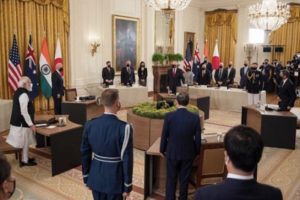 On September 24, President Biden hosted Prime Minister Scott Morrison of Australia, Prime Minister Narendra Modi of India, and Prime Minister Yoshihide Suga of Japan at the White House for the first-ever in-person Leaders’ Summit of the QUAD. The leaders released a Joint Statement which summarised their dialogue and future course of action. The regional security of the Indo-Pacific and strong confidence in the ASEAN remained on the focus along with response to the Pandemic.
On September 24, President Biden hosted Prime Minister Scott Morrison of Australia, Prime Minister Narendra Modi of India, and Prime Minister Yoshihide Suga of Japan at the White House for the first-ever in-person Leaders’ Summit of the QUAD. The leaders released a Joint Statement which summarised their dialogue and future course of action. The regional security of the Indo-Pacific and strong confidence in the ASEAN remained on the focus along with response to the Pandemic. 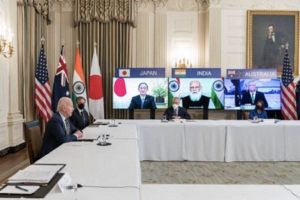 The QUAD Vaccine Partnership was announced at the first QUAD Summit on 12 March 2021 where QUAD countries agreed to deliver 1.2 billion vaccine doses globally. The aim was to expand and finance vaccine manufacturing and equipping the Indo-Pacific to build resilience against Covid-19. The launch of a senior-level QUAD Vaccine Experts Group, comprised of top scientists and officials from all QUAD member governments was also spearheaded.
The QUAD Vaccine Partnership was announced at the first QUAD Summit on 12 March 2021 where QUAD countries agreed to deliver 1.2 billion vaccine doses globally. The aim was to expand and finance vaccine manufacturing and equipping the Indo-Pacific to build resilience against Covid-19. The launch of a senior-level QUAD Vaccine Experts Group, comprised of top scientists and officials from all QUAD member governments was also spearheaded.  Although the Tsunami Core group had to be disbanded on fulfilment of its purpose, however the quadrilateral template that formed remained intact as a successful scaffolding of four countries, as stated by authors Patrick Gerard Buchan and Benjamin Rimland in their diplomatic brief about QUAD ( you can access the brief at
Although the Tsunami Core group had to be disbanded on fulfilment of its purpose, however the quadrilateral template that formed remained intact as a successful scaffolding of four countries, as stated by authors Patrick Gerard Buchan and Benjamin Rimland in their diplomatic brief about QUAD ( you can access the brief at 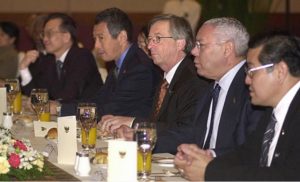 Secretary of State Colin Powell stated that the Core Tsunami Group was to be disbanded and folded and clubbed with the broader United Nations led Relief Operations. In a Tsunami Relief Conference in Jakarta, Secretary Powell stated that
Secretary of State Colin Powell stated that the Core Tsunami Group was to be disbanded and folded and clubbed with the broader United Nations led Relief Operations. In a Tsunami Relief Conference in Jakarta, Secretary Powell stated that 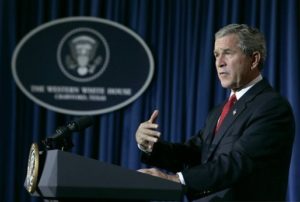 Soon after the Earthquake and Tsunami crisis, humanitarian reliefs by countries, viz., US, India, Japan, and Australia started to help the 13 havoc-stricken countries. The US initially promised $ 35 Millions in aid. However, on 29
Soon after the Earthquake and Tsunami crisis, humanitarian reliefs by countries, viz., US, India, Japan, and Australia started to help the 13 havoc-stricken countries. The US initially promised $ 35 Millions in aid. However, on 29 At 7:59AM local time, an earthquake of 9.1 magnitude (undersea) hit the coast of Sumatra, an Indonesian island. As a result of the same, massive waves of Tsunami triggered by the earthquake wreaked havoc for 7 hours across the Indian Ocean and to the coastal areas as far away as East Africa. The infamous Tsunami killed around 225,000 people, with people reporting the height of waves to be as high as 9 metres, i.e., 30 feet. Indonesia, Srilanka, India, Maldives, Thailand sustained horrendously massive damage, with the death toll exceeding 200,000 in Northern Sumatra’s Ache province alone. A great many people, i.e., around tens of thousands were found dead or missing in Srilanka and India, mostly from Andaman and Nicobar Islands of Indian territory. Maldives, being a low-lying country, also reported casualties in hundreds and more, with several non-Asian tourists reported dead or missing who were vacationing. Lack of food, water, medicines burgeoned the numbers of casualties, with the relief workers finding it difficult to reach the remotest areas where roads were destroyed or civil war raged. Long-term environmental damage ensued too, as both natural and man-made resources got demolished and diminished.
At 7:59AM local time, an earthquake of 9.1 magnitude (undersea) hit the coast of Sumatra, an Indonesian island. As a result of the same, massive waves of Tsunami triggered by the earthquake wreaked havoc for 7 hours across the Indian Ocean and to the coastal areas as far away as East Africa. The infamous Tsunami killed around 225,000 people, with people reporting the height of waves to be as high as 9 metres, i.e., 30 feet. Indonesia, Srilanka, India, Maldives, Thailand sustained horrendously massive damage, with the death toll exceeding 200,000 in Northern Sumatra’s Ache province alone. A great many people, i.e., around tens of thousands were found dead or missing in Srilanka and India, mostly from Andaman and Nicobar Islands of Indian territory. Maldives, being a low-lying country, also reported casualties in hundreds and more, with several non-Asian tourists reported dead or missing who were vacationing. Lack of food, water, medicines burgeoned the numbers of casualties, with the relief workers finding it difficult to reach the remotest areas where roads were destroyed or civil war raged. Long-term environmental damage ensued too, as both natural and man-made resources got demolished and diminished.
No responses yet